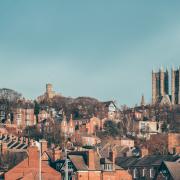It’s decision time on extending the Yorkshire Dales National Park. Terry Fletcher reports
The Yorkshire Dales National Park is one of Britain’s best-loved landscapes. An estimated14 million visitors from all over the world arrive each year, drawn by its apparently unchanging views and wind-swept hills. But if all goes according to plan the Dales are about to experience their biggest change for more than half a century.
The park was created in 1954 to safeguard 680 sq miles (1,762 sq km) of valleys and hills following years of haggling over boundaries but now after 60 years of on-off campaigning the park is set to grow by almost a quarter.
If plans drawn up by Natural England, the government’s countryside advisor, are approved by ministers in the next few months another 160 sq miles (414 sq km) will be drawn in. The new areas are all to the north west of the park and extend deep into Cumbria and Lancashire, taking in Mallerstang, Wild Boar Fell and the northern Howgill Fells as well as the hills to the north of Kirkby Lonsdale. At the same time in a linked plan it is proposed to extend the Lake District National Park eastwards with the result that the two national parks would almost meet at the M6 motorway, leaving only an ‘infrastructure corridor’ carrying the M6, west coast railway line and power cables between England and Scotland.
Since the very creation of the parks conservationists have considered the extensions as ‘unfinished business’ and today’s campaigners argue that the original boundaries were the result of a mish-mash of historical factors, most of which are no longer relevant. They warn it is now more important than ever that the landscape is protected for future generations from developments such as windfarms which pose an ever-increasing threat to the skyline.
The president of the Campaign for the Protection of Rural England, the former Poet Laureate, Andrew Motion, has urged the government to take the opportunity to put right an historical omission. His views were echoed by the president of the Campaign for National Parks, TV presenter Ben Fogle, who said the proposed extensions were the finest tracts of undesignated countryside in England. Including them in the national parks would give a much-needed boost to the local economies during a tough time, he said.
Not everyone is convinced, however, and five local councils, which would lose planning control over the proposed areas, forced a public inquiry into the plans earlier this summer. Eden Council, which covers much of the extension area, argued they were already doing a good job of protecting the landscape. Its communities director, Ruth Atkinson, said that the very fact that the area still merited national park status after 60 years proved that the existing arrangements, backed by local, national and European initiatives, were already protecting the landscape. ‘If it ain’t broke don’t fix it,’ she said.
That argument was backed by Richmondshire Council which also warned that pulling in large parts of Cumbria, more closely associated in the public mind with the Lake District, would dilute the Dales ‘brand’ and could even force a change in the name of the park and harm tourism. ‘Why risk the potential impact on tourism and community identity when the current arrangements are clearly working? In the current economic climate any actions that are not essential yet which may affect tourism should be resisted,’ it said.
But David Butterworth, chief executive of the national park, said those fears were groundless. ‘The Yorkshire Dales will still be the Yorkshire Dales. The boundaries of the Dales and the national park have never coincided. Some major dales, notably Nidderdale, are not in the park and some which are already included, such as Dentdale, are in Cumbria.
Veteran walker Colin Speakman, former chairman of the Yorkshire Dales Society, agreed: ‘National park designation is about landscape quality and these areas are as good as it gets. It has been very worrying over the years that they have no had protection. We have been particularly worried by the massive increase in onshore wind farms. The main reason they were not included originally was because of local government boundaries. Those changed as long ago as 1974 and we’ve been asking for them to be included in the national park ever since. Even if the name does change the Yorkshire Dales will still be the Yorkshire Dales. It is an internationally known brand and will continue to be so regardless of what an extended national park is called.’
One thing all sides agree on, however, is that if the extensions are approved the government must provide extra money to establish the bigger parks. Budgets have already been squeezed and national park staff lost because of spending cuts. ‘The jam is already being spread very thin,’ said Colin Speakman. ‘More money will have to be allocated for a larger area.’
David Butterworth agreed. ‘It would be a disaster if the two parks grew but there was no extra money to pay for improved access and all the other roles a national park provides. At present the government spends about 90p a year per head of population on national parks. That’s about three quarters of the price of a loaf of bread. In fact, in government terms it really is just crumbs.’



























